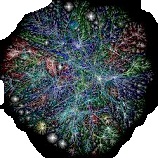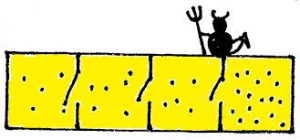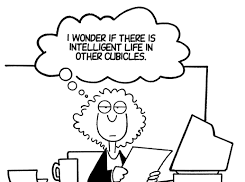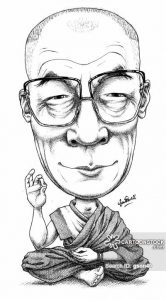In the beginning
Once upon a city, there was a residential colony with a 126 apartments. By this time in the march to progress, urban civil ization had already advanced to a stage where water was strictly controlled though other inessentials were abundantly available in mega malls and online emporia. The municipal water supply to our residential colony was regulated and supplied only twice a day, for about 45 minutes each morning and evening. In one of the association meetings, the residents, working in unity and for the collective good, decided to construct a common water reservoir (tank) for colony. Like bees in a hive subject to the singular, yet shared consciousness of the Queen, the residents sublimated their personal needs and intelligence to the collective. Each of them saw that ‘I gain if everyone gains’. Decision making was deliberate, consultative and consensual. This was the Hive Mind at work.
ization had already advanced to a stage where water was strictly controlled though other inessentials were abundantly available in mega malls and online emporia. The municipal water supply to our residential colony was regulated and supplied only twice a day, for about 45 minutes each morning and evening. In one of the association meetings, the residents, working in unity and for the collective good, decided to construct a common water reservoir (tank) for colony. Like bees in a hive subject to the singular, yet shared consciousness of the Queen, the residents sublimated their personal needs and intelligence to the collective. Each of them saw that ‘I gain if everyone gains’. Decision making was deliberate, consultative and consensual. This was the Hive Mind at work.
Water supplied by the municipal corporation was centrally received and further pumped to the individual overhead tanks of all the apartments. It worked well. All apartments received an equitable share of water. Scarcity was also shared equally. Sure, there were a few residents who had an extra tank or 2 , but no-one nursed any grievance. One a balmy spring morning, Mrs G nudged her husband and mutely pointed to the headlines.“Get Ready for a Dry Summer” , in that bold font peculiar to newspapers, was on right-centre of the front page, sandwiched between the coal scam update (25 column-cm of no progress at all) and a photograph of an MLA with a shoe in his hand. Official sounding sentences declared that due to 2 consecutive below par monsoons..bla bla…there would a significant cut in water supply during the summer months.
Entropy – The 1st Law of Time ( or the 2nd Law of Thermodynamics)
The G’s were a prosperous middle aged couple with 2 grown sons and a daughter, 2 sedans, an SUV and a Labrador. Washing their cars alone consumed about 250 litres of water a day. The washing machine another 250 lt. They were also expecting their daughter and son-in-law over for the month. Mr G chewed this information over in his quiet deliberate fashion and decided that an extra tank was in  order. So a 2000 litre tank was installed on the roof of Flat 87. Mr G smiled, Mrs G smirked , though never in outside company. Too early, as it turned out. The daily supply was barely sufficient to fill the 2 tanks he already had. Mr G consulted his plumber and installed a 1 HP motor on his inlet pipe. Sure enough, the G’s pulled about 4000 lts a day from the common reservoir.
order. So a 2000 litre tank was installed on the roof of Flat 87. Mr G smiled, Mrs G smirked , though never in outside company. Too early, as it turned out. The daily supply was barely sufficient to fill the 2 tanks he already had. Mr G consulted his plumber and installed a 1 HP motor on his inlet pipe. Sure enough, the G’s pulled about 4000 lts a day from the common reservoir.
The days wore on, the sky blazed a pale blue, the earth baked, dust storms created eddies at street corners, street dogs turned wimpy, cats bristled. Concrete walls and asphalt roads radiated heat even at night. On the roads, the pathetic pedestrian and cyclist was dessicated by the warm blasts from air conditioned cars hung up at signals, tempers flared and scooterists tied wet hankies around their face and head. Unknown Samaritans served water and lightly spiced cool buttermilk to passers by. Spiritual aspirants learnt the true meaning of the term ‘Tapas’.
As predicted, water supply fell by about 30%. The residents of colony felt the pinch but bore it all with admirable fortitude and numerous 20 ltr bottles of water purchased from the local grocer. Sorry, did I say all residents? It wasn’t long before the morning walkers, including the General Secretary of the association paid heed to the sound of a buzzing motor from flat 87. After a hastily held and hushed conference, the Secretary knocked on Mr G’s door and requested him in polite but firm tones to desist from using a motor as this would affect supply to the other households. In a softer tone he explained how this would be counter-productive to the welfare of all residents.
Mr G, however was ready for this. He toted out his well researched arguments
a) “my house is farther away, hence gets lesser supply” (not correct….the reservoir pump was powerful enough to push water a kilometer away), and
b) “I am not stopping anyone else from doing the same thing” (a classic!) and
c) ‘What if someone has more family members, wont their needs be more?” (sure dude, that’s the way you fight for water rights, a bigger family).
Anyway, events progressed to a General Body Meeting…wise counsel and appeals to rationality soon gave way to hot words and hostility. The meeting ended inconclusively, but it was clear that the era of amity lasting over 10 years was over. The ‘We’ sense had given way to the ‘Me’ sense.
Within 3 months, every apartment had a motor pump in it. 7 .15 am in the central park of the colony sounded like a chainsaw logging gang cutting a dozen trees. Ofcourse, no one got enough water to meet even legitimate needs, the reservoir never had more than a quarter tank as buffer, horse powers increased along with decibels. Factions formed amo ng the residents. General maintenance suffered, the flower beds died out, the park swings fell into disrepair, decision making ceased. In our bee hive, each worker bee and drone now believed in individual rights and chose not to feed the queen. The Hive Mind was no more, to be replaced by Rules, Laws, policing and authoritarianism. But do not despair, for they are not the first, nor will they be the last. Like a wedge of embankment that tumbles into a flooding river, they have only joined the flow.
ng the residents. General maintenance suffered, the flower beds died out, the park swings fell into disrepair, decision making ceased. In our bee hive, each worker bee and drone now believed in individual rights and chose not to feed the queen. The Hive Mind was no more, to be replaced by Rules, Laws, policing and authoritarianism. But do not despair, for they are not the first, nor will they be the last. Like a wedge of embankment that tumbles into a flooding river, they have only joined the flow.
Wisely Selfish!
This parable, being enacted in communities all over, set me thinking. I was consumed by the idea that the Hive Mind is probably the highest form of socially responsible thinking and action. In an age where individual rights are trumpeted and infringements to fundamental rights are challenged loudly in courts, the hive mind is the true balance between extreme self centered individualism on the one hand and a central authoritarian regime on the other. Here are some key characteristics of the Hive Mind at work
a) Members of the community voluntarily submit to the the group process and wisdom, while at the same time retaining their right to contribute and dissent in equal measure.
b) All members are peers irrespective of wealth, means or social status.
c) They are great listeners.
d) The decision making process aims for a consensus, not a majority.
e) Specific authority for action can be devolved or designated to an individual without impacting the right of each individual to question progress or actions.
f) Hierarchies evolve on the ability to influence, to bring relevant inputs and insights for informed decision making, and not on positions, roles or status.
g) There are no leaders , only facilitators to group decision making
h) Individual brilliance is acknowledged and is not perceived as a threat to hierarchy ( since there is none)
i) The perspective is long term, small sacrifices in the short term are common place.
The best corporates, particularly consulting organizations (where working in teams is de-rigeur), thrive on the agility, speed and quality of the hive mind at work. But here is the paradox. The success of the Hive Mind hinges almost entirely on the attitude of each individual within the team. Unlike regular teams, there is no team leader who carries administrative authority to force participation. Sorry, let me correct that…while a project leader with some authority is inevitable, his task within the group is to knit them together, facilitate, co-ordinate and lead towards a solution. However the decision to involve oneself, contribute and take on responsibility is a personal one, for each member of the team.
work. But here is the paradox. The success of the Hive Mind hinges almost entirely on the attitude of each individual within the team. Unlike regular teams, there is no team leader who carries administrative authority to force participation. Sorry, let me correct that…while a project leader with some authority is inevitable, his task within the group is to knit them together, facilitate, co-ordinate and lead towards a solution. However the decision to involve oneself, contribute and take on responsibility is a personal one, for each member of the team.
I would love to see the Hive Mind at work on the city roads. One sees this principle in operation in the most unexpected of places- Self Help Groups and Joint Liability Groups. two powerful communities fostered by sweeping impact of Micro-finance in the country. This is no less than a social revolution sweeping across India today. The SHG/ JLG is formed by a group of 4-5 credit customers who ‘trust’ each other . Here are a couple of links you to get you acquainted with the concept.
http://www.tocatchadollar.com/wp-content/uploads/2011/03/grameen-model.png
http://www.livemint.com/Opinion/vKWsSxGepyqdNP4hNTrw7H/Indian-microfinance-institutions-have-just-busted-a-myth.html
Everything is connected. Students of the spirit will recognize the near perfect parallel between the concept of Jivatma ( the individual consciousness) with Param-atma ( the universal consciousness). There is no loss of individual freedom of choice, BUT there will obviously be a huge difference in the awareness levels between the individual ( micro-cosm) and the universal ( macro-cosm)
What does it take to usher in such a change in mindset, especially among our political parties and instruments of public governance? Where does it begin? What are your thoughts? HRH The Dalai Lama
“My advice is that if you must be selfish, be wisely selfish. Wise people serve others sincerely, putting the needs of others above their own. Ultimately you will be happier.”
No, I didn’t say that. That gem was from a gentleman called Tenzin Gyatso, or the 14th Dalai Lama.
PS: For the literal minded, I believe in the ‘collective good’ but vehemently oppose ‘the greatest good of the greatest number’ rationale, which is the basis of irresponsible argument for authoritarian law and interference from 'big brother' states.